
VI - A week in Ukraine
Ukrainians continue to strive for their freedom.
It’s February 26, the last day of my week-long stay in Ukraine, and several young men are waiting in line in front of a door. It was the weekend, and in Kyiv, the capital of war-torn Ukraine, they were hoping to visit one of the local museums.
This is part of the continuous attempt by Ukrainians to convey normality in circumstances that are not normal.
Near the museum — in the large square in front of St. Michael’s Cathedral where U.S. President Joe Biden had visited unannounced a few days prior — there stood destroyed Russian tanks. On some of the tanks “Long Live Ukraine” had been written as a sign of pride for the Ukrainian victories on the battlefield. This square has become the place from which global media outlets report on the developments in Ukraine.
The many hotels surrounding the square were mostly cheap and came with the guarantee of having underground shelters. Considering the circumstances in Ukraine this effectively gives the hotel an extra star. Just a few meters from where Biden’s visit gave strength to Ukrainians on the front there are pictures and names of thousands of people who have been killed trying to defend the country since 2014, when Russia first occupied a large part of eastern Ukraine.
There were names for each year from 2015, 2016 to 2023, “The Wall of Remembrance of the Fallen for Ukraine,” is its official name. There was the photo of Arseney, born in 1999, who was killed on March 10, 2022, a month short of his 23rd birthday. Next to him is Oleksandr, pictured in military uniform. It is written that he was killed on June 6, 2022, shortly after his 39th birthday.
Most of the people in the pictures were smiling. Those who were now standing close to each other, likely never knew each other. Two spaces were empty, probably waiting for pictures of other heroes.
Not far from the square is the central station, which connects the capital with the rest of the country, and even with the east, where the fighting is fierce. This station, along with the metro stations, has served as a shelter for residents to protect themselves from air raids.
The station also connects the capital with the west of the country, where people have constantly fled to find shelter and a little peace. It also connects Ukraine to Poland, from where journalists, activists and representatives of various organizations have reached Ukraine through railways that have not been the target of attacks.
After a week in Ukraine, we too made our way to Poland. We were located 100 kilometers from the border and were notified on our phones about a possible Russian missile attack on Kyiv. It was 3:00 a.m. on February 27th. Our colleagues, who we had left at the hotel, must have taken shelter in the basement, waiting for the rockets. It’s become almost normal by now for them.
“Courage is a Ukrainian brand,” said a large canvas billboard that we encountered the first day we arrived in Kyiv. The smiles in the photographs of the fallen Ukrainians and the endurance of those who have continued to fight for a year, show that the writing on the fabric spoke the truth. They are guided by the hope that they will celebrate their next birthday in a free Ukraine.
V - Ukrainian children's songs of hope
The mission of Mykola Kuleba and Save Ukraine, to save the children of Ukraine.
Mykola Kuleba’s entire office on the outskirts of Kyiv consists of just one desk and six chairs. Kuleba is now the director of this organization, but between 2014 and 2021 he worked as Ukraine’s children’s ombudsman, welcoming and escorting people while coordinating the important work.
Now he leads the non-governmental organization Save Ukraine, whose main mission is the rescue of children from war zones in the country.
The work he does has completely changed his life. Separated from his family, now outside Ukraine, he is working to reunite Ukrainian children with their families. “This war has separated my family, and I miss them a lot,” said Kulebas, who travels to war zones every day and coordinates the organization’s teams. Sometimes he shelters people fleeing the fighting in his house and as he said himself, “I don’t separate my private life from what I do with my organization.”
At the time of my interview with him in February 2023, Kulebas had just returned from Kherson, a territory in southern Ukraine that for a time was under Russian occupation. His organization especially helps families who do not have the economic means to retrieve their children kidnapped by Russia. According to monitoring by international organizations, Russian forces kidnapped thousands of children after occupying Ukrainian cities and then sent them to Russia for what was called the “process of re-education in Russia.” Many of the kidnapped children were taken from orphanages, including in the Kherson region.
“Thousands of children without parents are in Russia now and we don’t know where they are. Many were deported during the war, many of them live in Russia and we are working to find their family members. We call it a rescue operation,” said Kuleba.
To get to Russia, they have to go through Poland, Latvia or Estonia. This route is more than 4,000 kilometers one way.
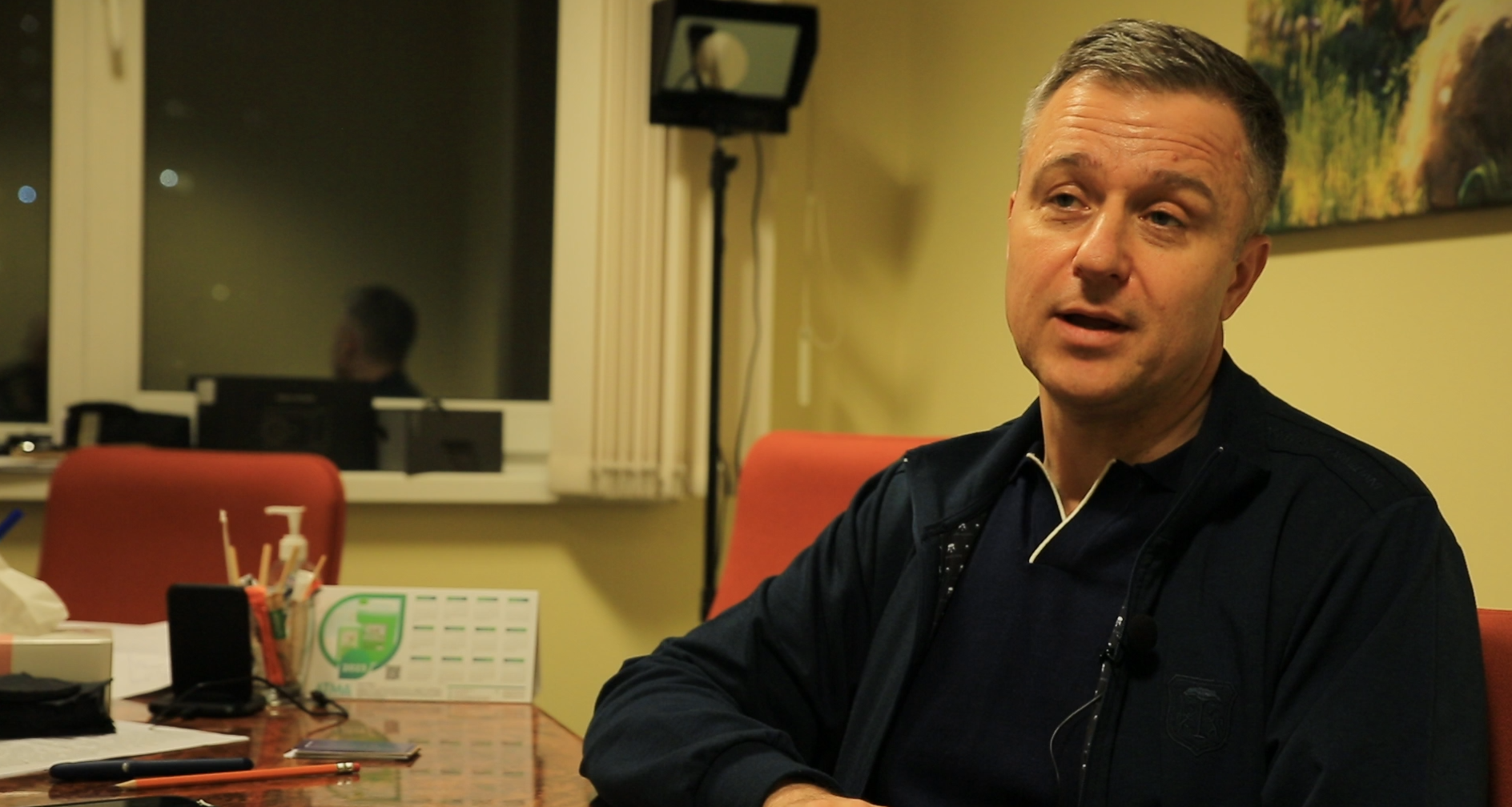
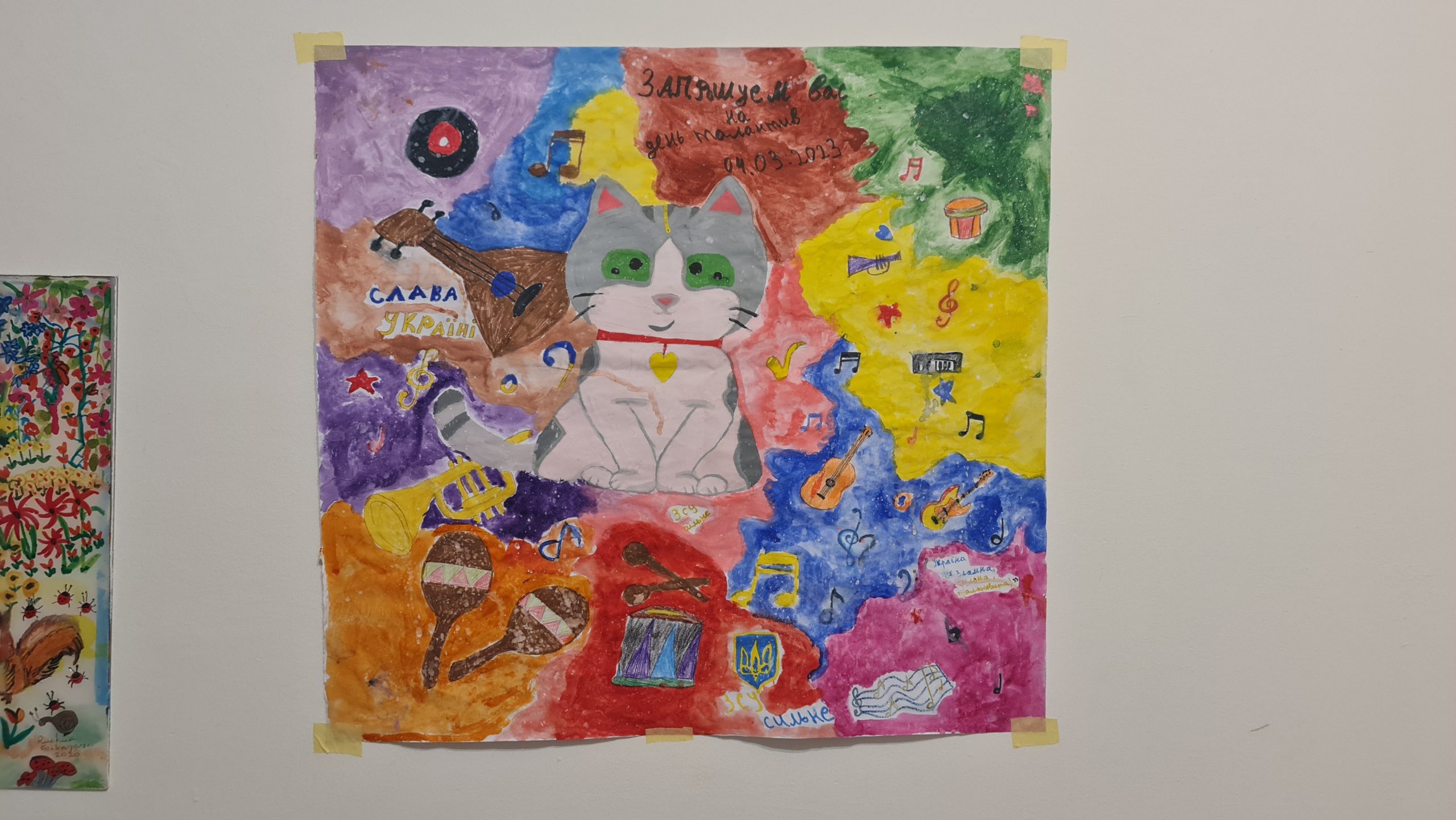
Only two kilometers from the offices, in a building with a large sliding door at the entrance, hundreds of people rescued from war zones are housed. The center organizes various programs to try to alleviate the trauma of those from occupied cities.
In addition to evacuation, rescue and shelter, other social services are also offered at the center. The employees and hundreds of volunteers there help refugees recover important documents, certificates, find housing, find a job and also provide them with medical support.
Hanna Gorkun, a social worker who has been working at this center since September 2022, describes her workplace as a center for hope and recovery. She showed that 162 people live in the center, people who have been evacuated from fighting hot spots in the east and south of the country. Out of these 162 people, 99 are children, most with at least one parent.
“These are the people who have lost a lot. They have lost their social ties and their homes,” said Gorkun.
In addition to these services, the center’s volunteers offer guitar and singing lessons. In one of the classrooms, dozens of children sang songs of hope.
IV - Three days travel to Kyiv
Ukrainian journalist Lidia Tarash's efforts to continue to work in occupied Ukraine.
Half an hour before the interview was scheduled, I got a message from Lidia Tarash: “Please can we postpone the interview. I have anxiety. There are air raid sirens.” Tarash is a Ukrainian journalist from Donetsk, who has been living in the capital of Ukraine, Kyiv, for several months now.
We met a few minutes later. She came burdened with the tale of the odyssey of her escape from the Donetsk region.
Before the Russian invasion of Ukraine, she worked as an editor at the newspaper “Nashe slovo” — the district newspaper of her town Volnovakha, which is one of the 18 regions in Donetsk. On February 23, 2022, after publishing the newspaper and after a long day of work, Tarash returned home at midnight. The next morning dawned differently for her and the city’s other residents. “At 5:00 a.m. I woke up hearing explosions nearby. I don’t know exactly where, but explosions were heard all over the city,” she recalled.
A day before the explosions, the media had announced that there would be an offensive from Russia, but Tarash had thought that this was only being said to instill fear, so she had ignored the news. Soon she realized that things were not as she thought.
Online media outlets were already flooded with the news that the explosions had woken up the residents of many other Ukrainian cities. Her son, who lived in Kyiv, told her that even the capital was not spared. Putin had launched the so-called “special military operation.”
“We realized that the war had started, my children woke up, we started to gather and decided that it would be better to spend the night at my parents’ house, who lived in another part of the city,” Tarash recalled.
After that violent awakening, she went to the newspaper office where she worked the next day. The next issue of the newspaper, that they had been working on for a long time, was ready. However, they had no way to distribute it because in the nearby big city, Mariupol, everything was closed. Tarash greeted her colleagues telling them not to come to the office anymore and to take safety measures for themselves and their families.
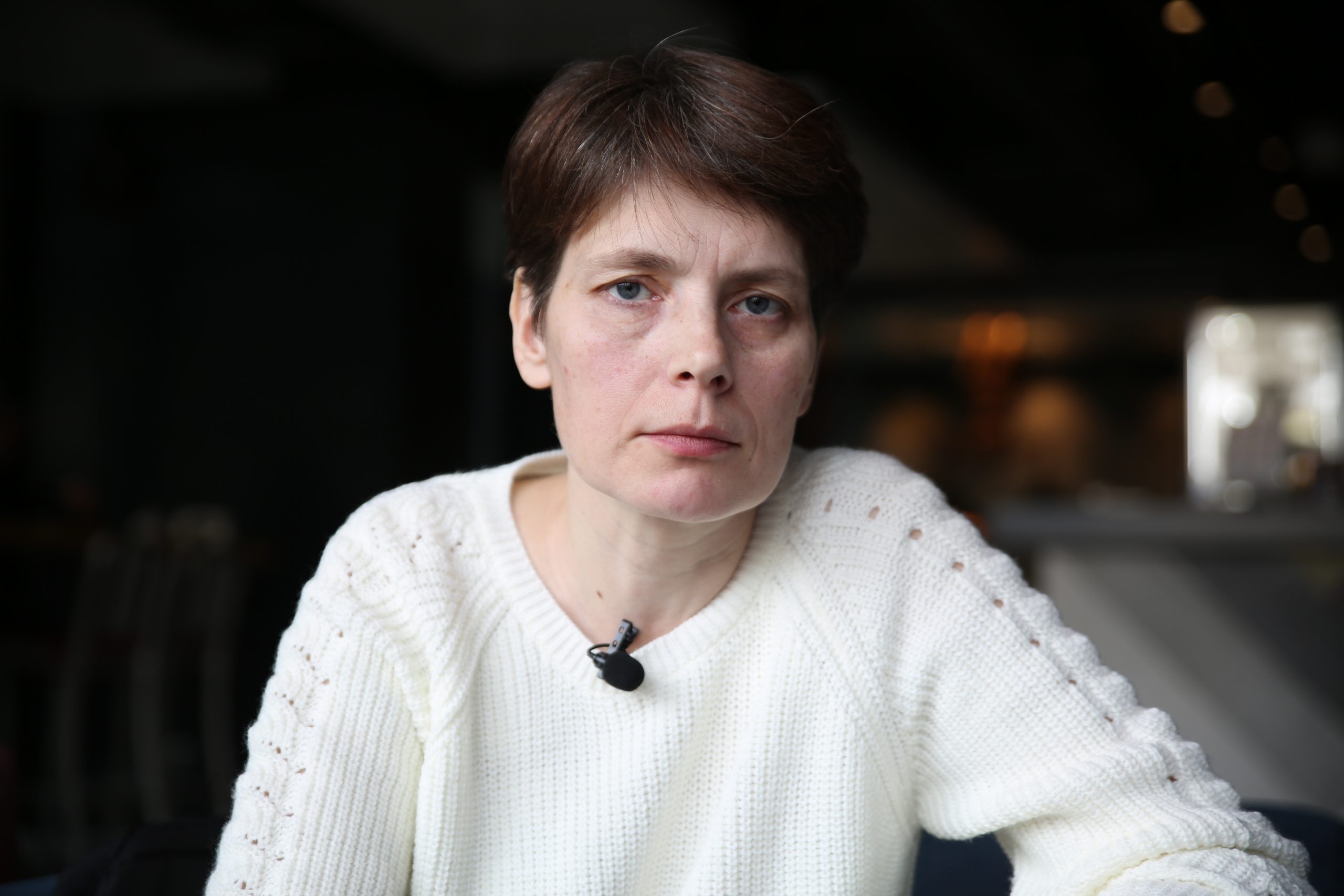
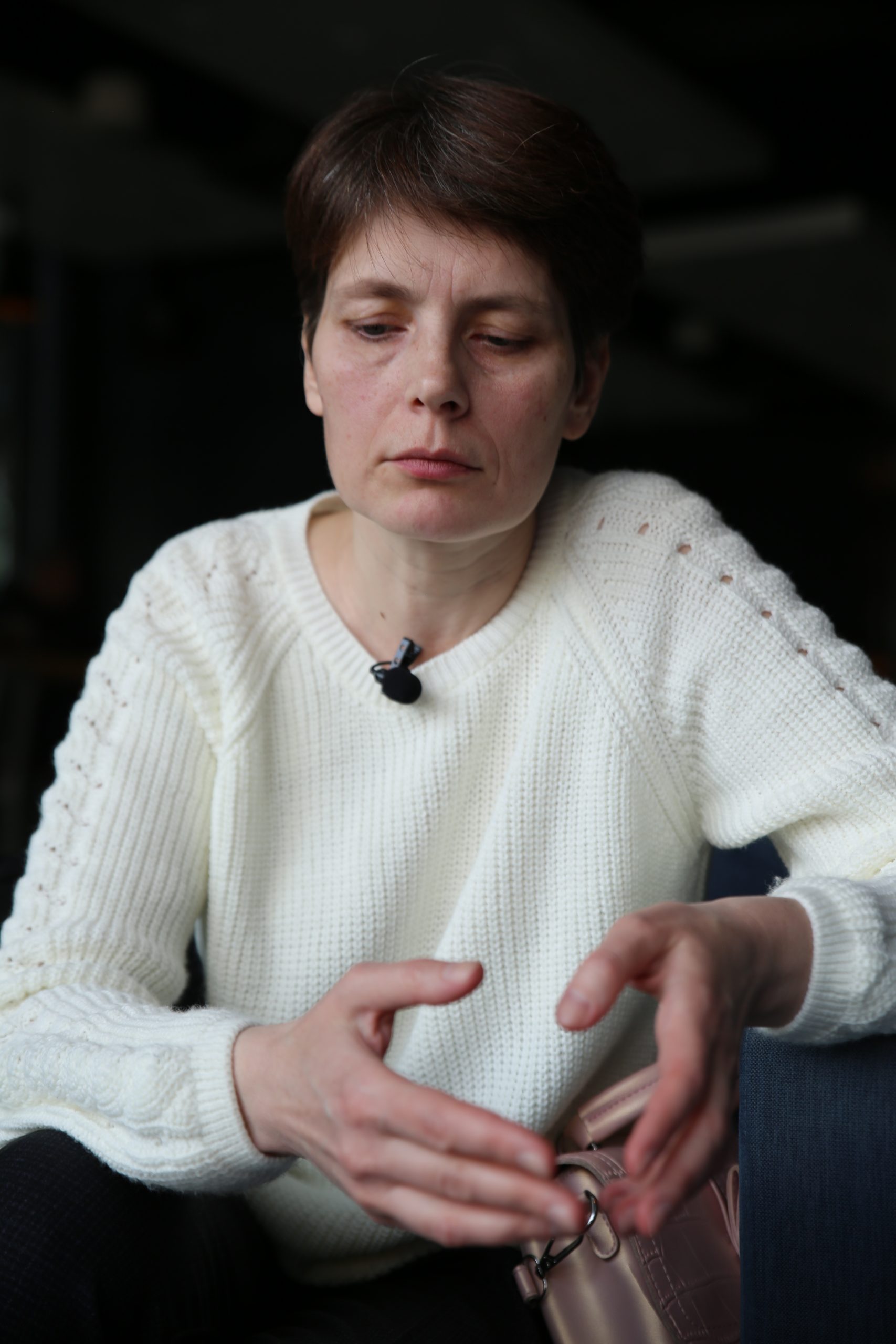
For the next two weeks, along with her daughters she stayed in the basement of her parents’ house in Volnovakha. With the sound of planes that were passing overhead, she and her children remained locked up there until March 11. “The children didn’t say anything. They just sat down. We weren’t crying, we weren’t in such a severe emotional state that we panicked. No, we endured. But every day the shelling was stronger and stronger,” the journalist said.
After a week, she tried to flee the city, but was told there were no buses, until a relative managed to break through to drive them to the larger center, Donetsk. On the way there were checkpoints and controls by the forces of the Donetsk People’s Republic (DPR), the region occupied by Russia since 2014.
Soon, Tarash realized that they had a special interest in her since they knew she was a journalist and had to go through the “filtering process.” This is a practice that Russian forces have used since the start of the occupation, which involves the registration and interrogation of Ukrainian citizens in Russian-occupied areas before they are transferred to Russian territory.
While staying in Donetsk, Tarash received an invitation from the DPR authorities to work for them and open a newspaper that would serve Russian propaganda. She refused, even though she feared that this would lead to retaliation. The authorities told her to notify them if she changed her mind.
During that time, her parents in Volnovakha informed her that pro-Russian forces arrived armed to search their home because of her work. This made her realize that she could not stay long in the Donetsk region and began to look for an escape route to Kyiv. The only way to leave was actually through the territory of the occupying state — Russia.
“We left on May 27. When we reached the DPR border with Russia, I was interrogated again, this time by the Russian security service,” said Tarash. She was the only one who was detained and was released only after three hours. “During that time I was not able to see my daughters, who were waiting on the bus.”
After the stop, Tarash arrived in Moscow. From Moscow, she traveled on several buses for a full three days through Latvia, Lithuania, and Poland, just to reach Kyiv. “I am happy to be here,” said Tarash, who now, with the help of the National Union of Journalists, is able to do her job as a journalist.
She was offered the opportunity to become part of the Journalists in Residence – Kosovo program, but she refused because of her 22-year-old son, who studies in the Ukrainian capital. From there, she said that she will keep working to bring Ukraine’s liberation from Russia closer.
III - Three towns and the defense of Kyiv
A dispatch from Irpin, Bucha and Borodyanka
A destroyed bridge has become the symbol of Irpin, 26 kilometers north-west of Kyiv. When Russian forces reached Irpin in the initial phases of the invasion in February 2022, the Ukrainians acted quickly and destroyed the bridge so that Russian heavy machinery could not advance.
The old bridge is still there, destroyed. A new bridge, for residents of the city that was retaken by Ukraine at the end of March 2022, is being built
Drones fly over both the new bridge and the old one, which now is called The Bridge of Life. When the bridge stood, hundreds of people in Irpin found shelter under it while escaping from the Russian air and ground attacks. Then, under the same bridge by the church, they walked towards the buses which evacuated residents to Kyiv.
Almost a year later, there are baby carriages, shoes and toys near the bridge — indicators of the tragedy that changed the town forever. Over 20,000 civilians were evacuated within a month of the invasion. At least 290 were killed across the city.
Near the bridge there is also a line of burned cars. When the terrified inhabitants of Irpin realized that they could not leave the city by car, they left their vehicles behind.
Now sunflowers have been painted on the destroyed cars.
On the way to the rest of the city, a large billboard has a message of thanks to former U.K. Prime Minister Boris Johnson. Despite being unpopular and controversial in London he is often celebrated as a hero here in Irpin for his support and assistance in providing arms to Ukraine.
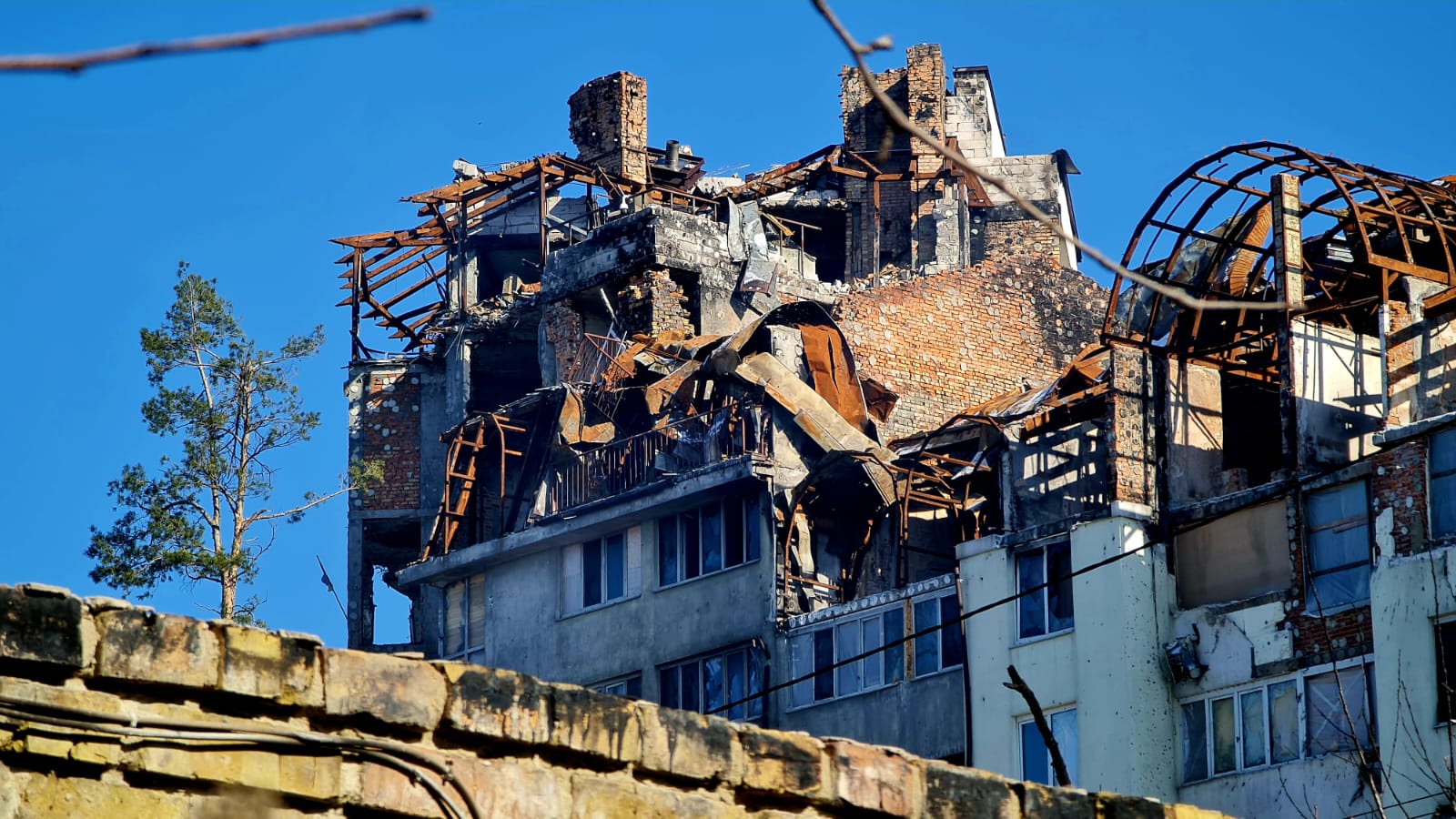
A Ukrainian man Andrii Ivanov comes with us from Kyiv to Irpin. As soon as we arrive in his city, he takes us to his house, which has been destroyed. Ivanov managed to evacuate his family before an attack destroyed it and other houses in the neighborhood.
“I used to live here with my wife. We bought this house a year and a half ago,” he said as we walked carefully through the ruins of what used to be his home. “On March 6 [2022] we left because Irpin had been almost entirely captured. On March 8, according to the neighbors, a mine exploded and destroyed our house. We heard the artillery every day and night. After five or six days, shops were closed, bridges were destroyed and people started helping each other. The next day, there was no water or electricity in Irpin.”
On the way to the suburbs, you can see other destroyed houses. Just outside Irpin, the buildings of an entire neighborhood have no roofs. Only the green cross of a pharmacist’s shop adds some color to the neighborhood. With burn marks covering the white facade and shattered glass in the windows, the buildings still stand, but no one lives there.
The vice-mayor of Irpin, Andrii Kravchuk, said that the town deserves the status of a hero city because it stopped the Russian army in their attempt to reach the presidential palace in Kyiv.
“The Russians traveled for three days from the border with Belarus to come here and on February 27 [2022] they started the attack. But, for a month, they could not progress. Because there were no more bridges and the level of the river was such that it could not be crossed by Russian military equipment. Maybe I sound immodest, but Irpin deserves the status of a hero city, because the enemy turned back from here and could not go further. And to think that the main bridge is only six kilometers from Kyiv,” said Kravchuk.
Bucha, a town full of pain
Hundreds of residents of Bucha’s town paid the highest price, just to prevent Russian forces from approaching Kyiv and the presidential palace. In March 2022, after Russian forces took control, they began mass killings of local residents and shot many of them in the middle of the road.
In a few days, going from house to house, Russian forces killed more than 400 civilians in Bucha. The bodies were first taken to the city church, before being sent 300 meters away to the morgue for autopsy.
Bucha’s Deputy Mayor Shepetko Serhii Anatoliiovych recalls how heavy the smell of death was. “The Russian Federation invaded the entire town on March 3 and held it until March 31. According to our calculations there were 4,000 Russian troops in the city and 3,500 residents who could not leave Bucha for various reasons. At that time, the massacres happened, and we were constantly carrying the bodies from the church to the morgue,” he said.
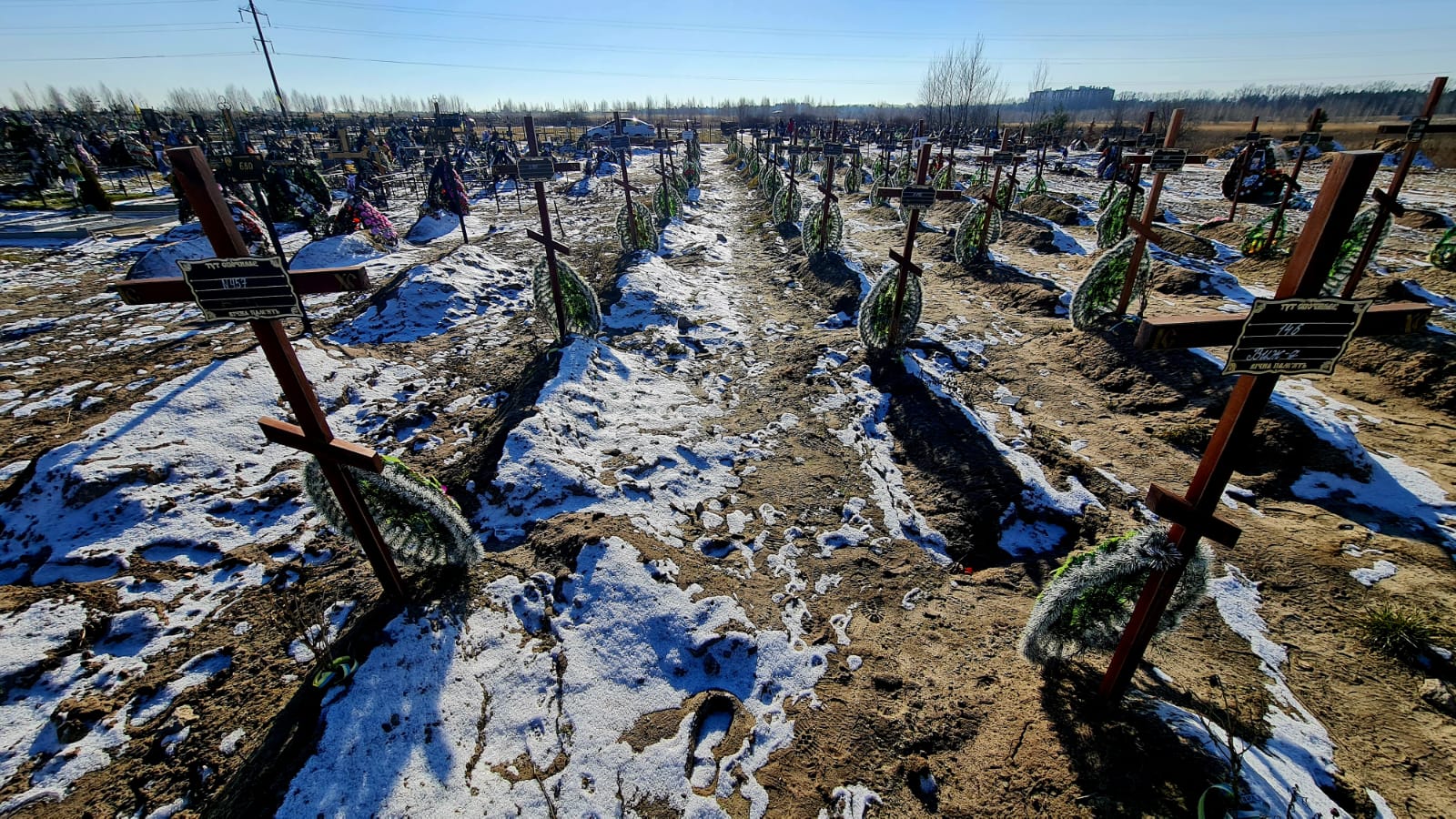
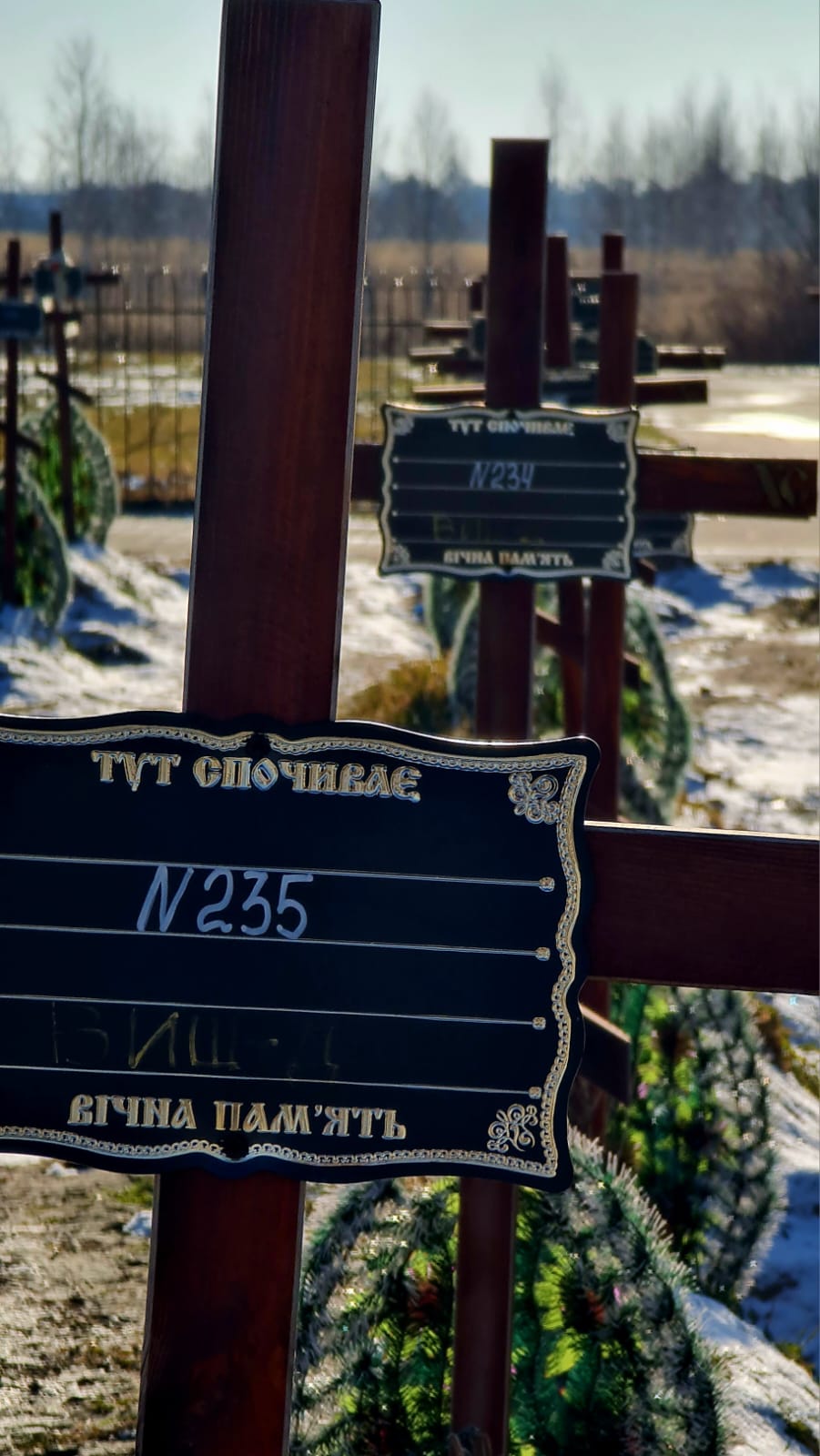
On March 11, 2022, armed occupation forces entered the municipality building, violently trying to make the officials obey their orders. “I was here until March 12 and then I fled the city. The Russian forces forced their way into the municipality building and appointed a meeting with us for the next day, at 9 a.m. to discuss how the city will be managed with them in charge. We would never cooperate with them. Therefore, the next day, all the city staff management left, except for the mayor, who was here all the time,” recalled Anatoliiovych.
On the main street where the bodies of the murdered Ukrainians were thrown, houses are now being rebuilt. On both sides of the street, workers try to plug visible bullet holes in houses.
As you leave the town, you see that the cemetery has been expanded. Most of those who were killed in the first days of the invasion are buried there. Valeri, Vasil, Anna, Volodymyr and many other names.
However, the names of 78 who were killed by the Russian army remain unknown. City officials said many bodies were burned to such an extent that identification was impossible. On the graves wrapped with the blue and yellow flag, some names are written, then suddenly only numbers can be seen.
On the large crosses on the graves, numbers such as 275, 327, 328 and 431 are written. Residents find it difficult to talk about the massacre, which is believed to have pushed Western leaders to increase and consolidate the support for Ukraine.
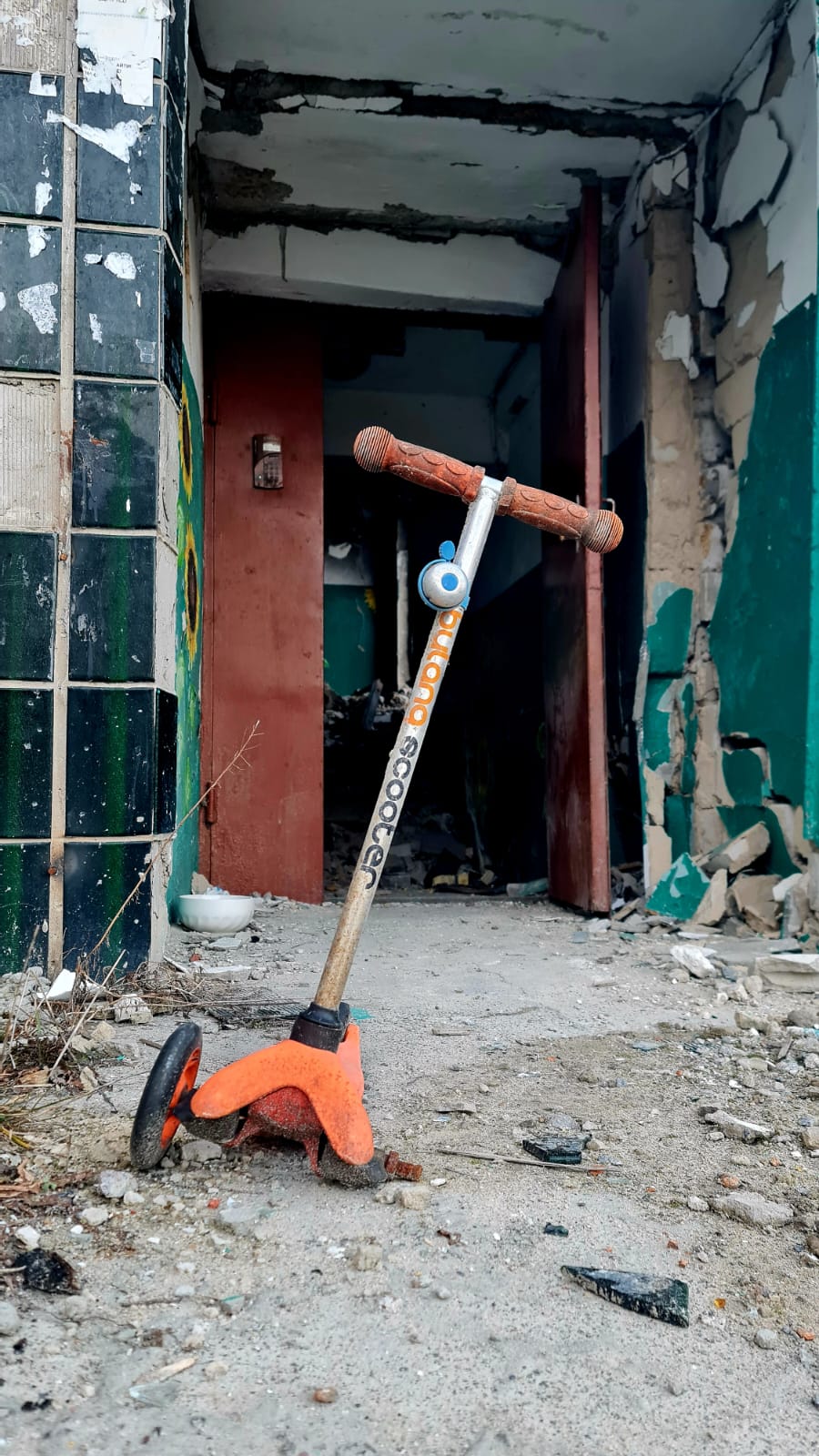
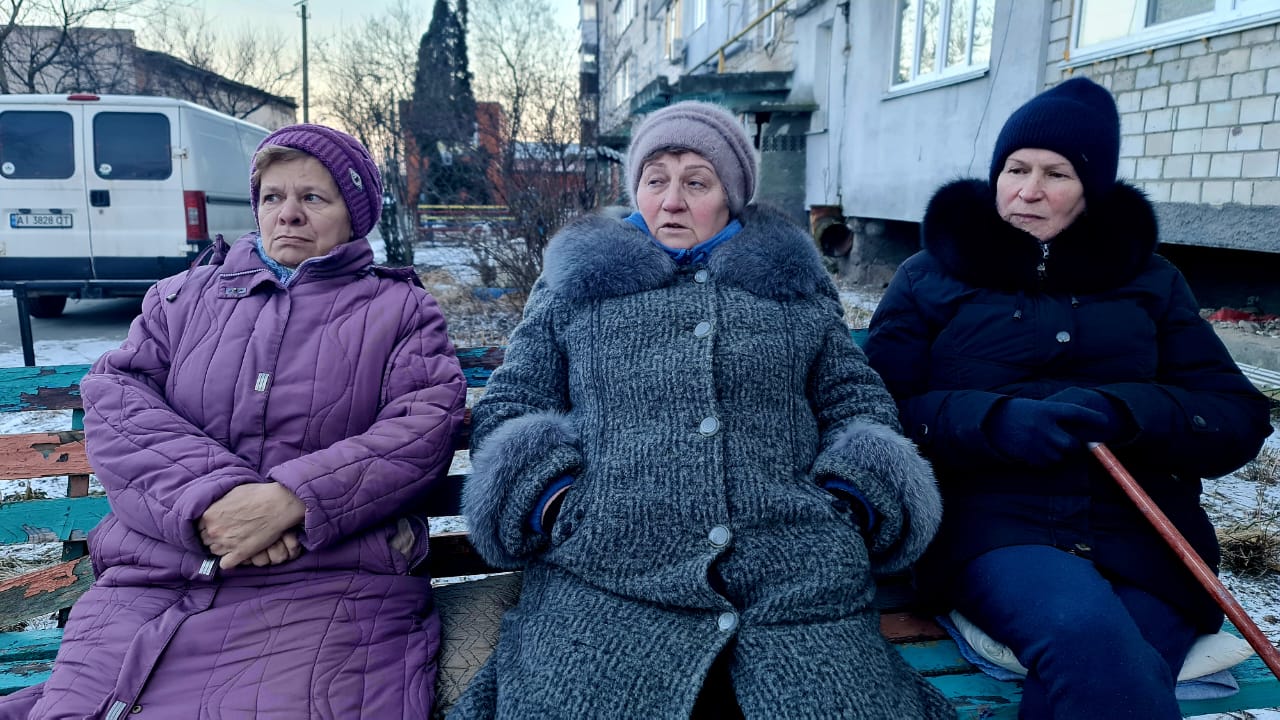
Borodyanka, almost a ghost town
The first impression of the town of Borodoyanka, with only one main street, is that of destruction.
Among buildings reduced to cinders and ash, a kid’s scooter can be seen in one of the entrances, a sign that no one was spared from the attacks. Residents here used a nearby cave to hide for several days while Russian military planes destroyed everything above ground. Others took shelter in their basements.
Vira is sitting next to the destroyed buildings with her two neighbors. Although almost a year has passed, she remembers how she ran to escape.
“I am 65 years old and I ran five kilometers to hide in that warehouse here. This is something I will never forget. They were constantly shooting and bombing,” said Vira.
Even her two neighbors, the same age as Vira, hesitate to recall the horror. “We have suffered so much this year of invasion. It was terrible what happened here — everyone was crying and screaming in that basement where we were hiding. Then the water pipes burst and the basement was flooded, it was real chaos. Meanwhile, outside, everything was on fire,” said one of them.
“When one building was bombed, the pipes exploded and we were forced to leave. We went to another basement. Some were sheltered in this nursery near here. Everyone ran where they could. The next morning, the shooting continued. On March 1, Ukrainian forces created a safe corridor for the evacuation of residents on the outskirts of Borodyanka. From there they took us in cars and drove us to a nearby village. After five days there, we left for the west of Ukraine, where there was no fighting,” added the other.
Next to the empty buildings is an artwork by the British street artist Banksy. Protected by a glass cover, it depicts a Ukrainian girl defeating the Russian dictator Vladimir Putin in judo.
From Ivanov to Vira, everyone has an immediate answer to the question of whether Ukraine will win the war soon. “It is not up for discussion. Ukraine will win.”
II - 'You have one task: save as many soldiers as possible'
From a political scientist to a driver for the Ukrainian military.
The Veterano Pizza shop in Kyiv does not look like a normal pizzeria. Instead of paintings of pizza, glass display tables are filled to brim with bullet casings. A section of the wall is covered with a large fake machine gun, which hangs above emblems of police units and armies from around the world. This is the pizzeria where veterans gather and where we meet Mykhailo Lavrovskyi.
The life of this 26-year-old, a former student of political science, changed drastically on February 24, 2022.
On the night of the 23rd Mykhailo left the capital for the town of Vinnytsia, where his parents lived. On the way, he heard the speech made by Russian President Vladimir Putin announcing the invasion of Ukraine.
Like many others in Ukraine, Mykhailo decided that he must do something to fight Russia.
“I was in Vinnytsia with my parents for a few months to see what I could do to help. At first, I helped friends on the front line by sending various cars from Poland and the European Union. Then, I started to use Telegram more, where we received data about the enemy’s location and then sent it to the Ukrainian forces so they could attack the Russian forces,” he said.
But this was not enough. Despite the fears of his parents and grandparents, Mykhailo decided to go to the front. He used one of his strongest skills — driving heavy vehicles. Together with a medical team, he committed to saving wounded soldiers.
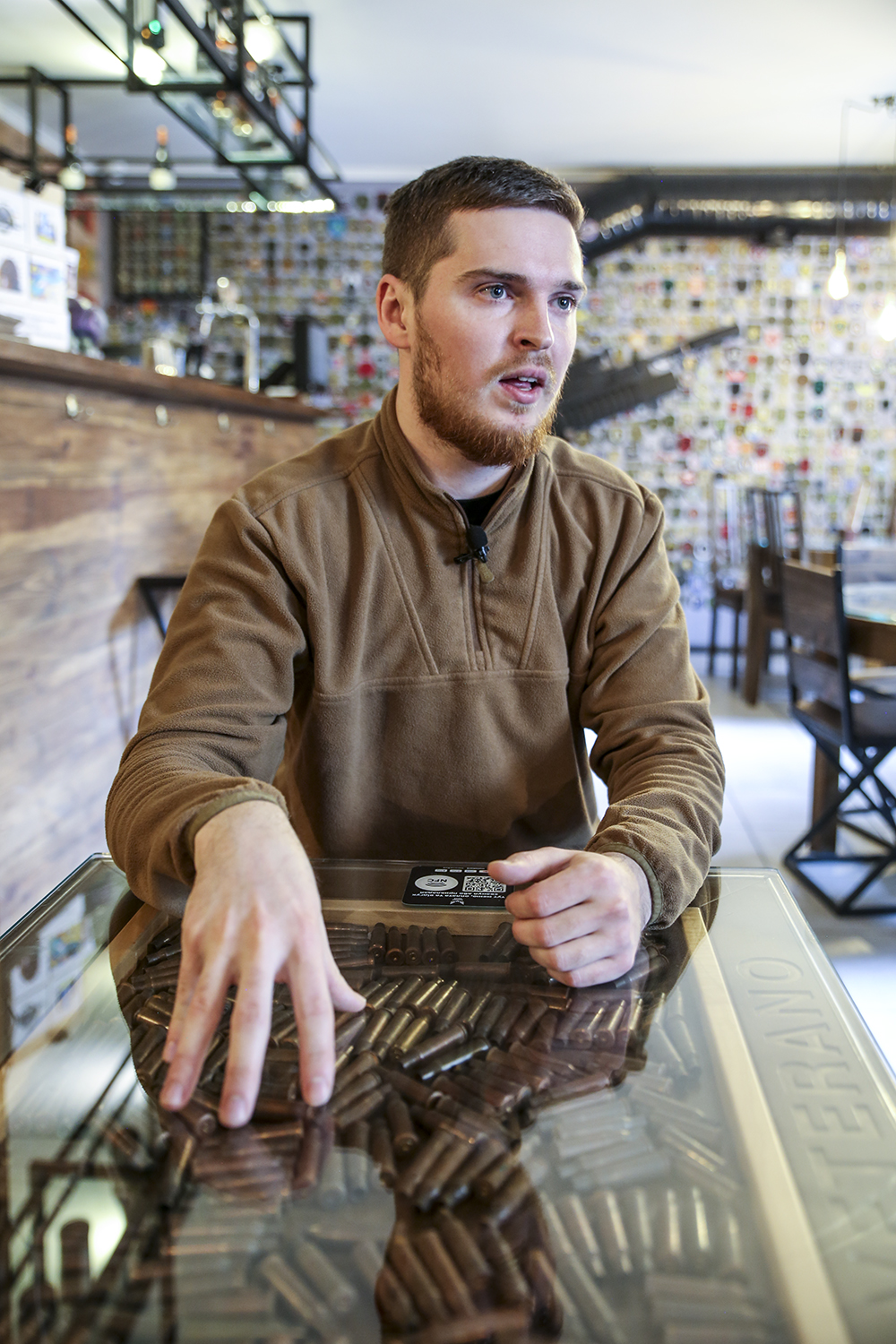
“I had many friends in the army and when the war started, I immediately called them to ask what they needed. I started saving money and in April I decided to join the volunteer medical team, go to the war front and offer my help directly,” he said. “I am a CASEVAC driver [from Casualty Evacuation — the military term for the team that evacuates the wounded] and we have a mission to save as many lives as possible.”
Being in this position has made him much stronger than he was before the invasion. With his own eyes he has seen people that were injured and killed in areas that are being constantly bombarded by the Russian army.
“When you are there, your perception of everything changes. Before the war, I was even afraid to give blood — I used to faint. But now I’ve seen so many injured, some dead. Your brain just starts working differently. You know that you have only one task: to save as many people as possible and to ensure that the dead return to their families for burial,” said Mykhailo. “I found out that this is the role that suits me because I’m not a super cool soldier, but I’m just a good driver. Driving to the frontline while being bombed by the Russians is the best thing I know how to do.”
Mykhailo said that in the first few months when he was in the Donetsk region, they managed to save more than 300 soldiers. The most difficult feeling for him is the helplessness when they do not reach the wounded, who eventually die.
“The worst thing is that sometimes we can’t reach a certain area at all where a wounded person might be and give them first aid, because there might be a Russian tank shooting and we don’t have the commander’s permission to go,” said Mykhailo. “Then we hear on the radio that there are no more wounded, only the dead. This is the hardest because you still believe that you can do something and then you find out that the person has died. This is the most difficult feeling.”
He is now in Kyiv and is preparing a team to return to the front. After a year of fighting, according to him, the capital of four million inhabitants has changed a lot. Kyiv has gone from an “almost apocalyptic-looking city without people or cars in March 2022,” to an almost normal city in February 2023, with “many cars, people and open restaurants.”
The war shows no sign of ending soon and Mykhailo said he is quickly preparing for a new mission on the ground to save more soldiers’ lives.
I - 'May the next birthday be in a free Ukraine'
A year into the Russian invasion of Ukraine, the war continues, but so does the hope for freedom.
At the Ukrainian border a soldier enters the Polish bus to collect our passports. The procedure is routine and happens quickly. He collects the passports of Ukrainian citizens left and right, who are returning to their homes across various cities of the war-torn country.
The ease with which he collects the passports changes when he encounters a foreign and distant one. “Kosovo?!” The soldier is surprised when he receives the passport issued in Prishtina. “Where are you going?” he immediately asks.
“To Kyiv, we are journalists.” This required media accreditation, which the Armed Forces of Ukraine handle. This accreditation, even more than a Ukrainian visa, is crucial to conducting media work in areas where there is fighting and a curfew. Without a green military card, one cannot even record on the streets of Kyiv.
My card has the number 13962. From February 2022, when my card was approved, until the end of the week marking the first anniversary of the invasion, more than 14,000 journalists, photographers, cameramen and other media workers will have crossed the border from Poland to Ukraine.
A big “Ukraine” sign in yellow and blue welcomes those driving on the road, which millions of refugees crossed this year. They were forced to flee their homes due to incessant Russian airstrikes and the occupation of several regions in Ukraine.
The same colors in different forms appear along the road that travels through the small villages and larger cities of western Ukraine. Lining the roads littered with potholes, which the bus hits repeatedly, are billboards with messages and prayers. Many of them, signed by the Ukrainian Orthodox Church, say “God save Ukraine,” “God bring peace.”
As you get closer to Kyiv, the presence of army roadblocks increases. Cars and buses slow down and some are stopped by the army. The Ukrainian armed forces are present here, residing in make-shift buildings. They’ve been there since Ukraine regained control of these territories, part of what is known as the “de-occupation” process.
The road, about 900 kilometers from Poland, seems significantly shorter once we approach the city of Zhytomyr, one of the largest near the capital. Zhytomyr was used as a corridor for those who fled to western Ukraine at the beginning of the occupation. For the most part the city has been untouched by fighting over the last year. Two civilians were killed there in the first attack in February 2022 and the last attack in Zhytomyr occurred in December 2022, when several rockets were fired at energy infrastructure facilities.
Buses here continue to come from Kherson, Odesa and other areas that find themselves in less peaceful states.
Life in the capital, 150 kilometers away, with over four million inhabitants, seems normal. Shops, banks and schools continue their usual activities.
“Bravery is Ukrainian brand,” reads a large sign on a clothing store. Instead of the usual “sale” banners adorning the doors and windows of shops, the locals have chosen to show their pride for the “Ukrainian brand,” which, according to them, cannot be bought off at any price. The lights here are back on again, after a long period of planned power outages to save electricity. Russian attacks on Ukrainian state energy plants and infrastructure have made this a necessity.
The first people we meet in Kyiv are Sergeiy, Lina and Andreii from the Union of Ukrainian Journalists. After a year of exchanging emails and calls to plan the housing of Ukrainian journalists in Kosovo, we finally met in person. This meeting falls on the first anniversary of what has become the most difficult period of work faced by Ukrainian media outlets.
From April 2022 to the present, 13 Ukrainian journalists have been sheltered in Kosovo, through a program financed by the Government of Kosovo and implemented by the European Center for Press and Media Freedom and the Association of Journalists of Kosovo.
Sergeiy, Lina and Andreii take us for dinner to a well-known restaurant in the capital. It is called “Musafir” and the owners and staff are from Crimea. There in the restaurant you feel the drive behind the slogan “Crimea is Ukraine,” or at least that it will be again when this bloody war ends.
The guests at the next table are served a big cake and they all sing “Happy Birthday.” The whole restaurant joins in and a single wish can be read in everyone’s eyes: may the next birthday be in a free Ukraine.
As 10:00 p.m. approaches, there is a growing silence and people are suddenly scarce. The restaurant’s customers flee to their homes, so the owners can close up. A little music is heard on the street. Someone finishes their last cigarette. With their hands in their pockets to guard against the cold, everyone heads to their shelter. Curfew starts soon.
By 11:00 p.m. Kyiv sleeps. The millions of inhabitants remain in constant fear that they could be woken up by a siren warning them of Russian rockets.
They can fly overhead at any time.
Feature Image: Dina Hajrullahu / K2.0.
The content of these articles is the sole responsibility of K2.0.
Curious about how our journalism is funded? Learn more here.
